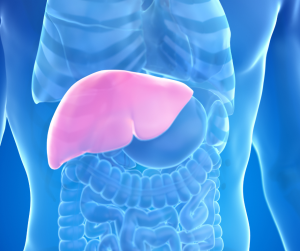- Open:Weekdays: 8:30 am – 5:30 pm, Saturdays: 9:00 am-2:00 pm
- Email: info@youdrugmart.com
Prevention of Liver Disease has never been more urgent—especially as liver-related deaths have surged by over 400% in the past five decades across Western countries. In Canada alone, liver disease affects more than 1 in 10 adults, often progressing silently until irreversible damage occurs.

The liver is one of the most vital organs in the human body. It performs over 500 essential functions, including detoxifying harmful substances, producing bile for digestion, and regulating blood clotting. Located beneath the rib cage on the right side of the abdomen, the liver quietly supports life every second. However, when liver function deteriorates, the consequences can be severe. Therefore, understanding the symptoms, causes, and prevention of liver disease is crucial for maintaining long-term health.
Although the liver has remarkable regenerative powers, it can become overwhelmed by toxins, infections, or genetic disorders. As damage accumulates, the liver’s ability to function declines. Consequently, early detection and lifestyle changes play a key role in the prevention of liver disease, especially in high-risk individuals.
Liver disease progresses through several stages, each more damaging than the last. Initially, inflammation—often caused by hepatitis viruses or toxins—triggers the liver’s healing response. If the injury persists, scar tissue begins to form, leading to fibrosis. According to the Cleveland Clinic fibrosis reduces blood flow and oxygen supply, impairing liver vitality. Eventually, fibrosis may advance to cirrhosis, which involves permanent scarring and irreversible damage. In the final stage, liver cancer may develop due to DNA mutations or chronic hepatitis infections. . Alarmingly, liver cancer ranks among the top 10 causes of cancer-related deaths worldwide. Thus, the prevention of liver disease becomes not only a health priority but a life-saving strategy.
Recognizing early symptoms is essential for the prevention of liver disease. Many signs are subtle at first but become more pronounced as the condition worsens. Common symptoms include:
Because symptoms may appear gradually, regular checkups and liver enzyme tests are vital. Early intervention significantly improves outcomes and supports the prevention of liver disease.
Several factors contribute to liver disease, ranging from genetics to environmental exposures. Therefore, understanding these causes helps individuals take proactive steps toward the prevention of liver disease.
Inherited conditions like Wilson’s disease or hemochromatosis disrupt liver metabolism. These disorders often manifest early and require lifelong management.
Hepatitis A, B, and C are leading causes of liver inflammation. Hepatitis B and C, in particular, can become chronic and lead to cirrhosis or cancer. . Vaccination and safe practices are key to prevention.
Diseases like autoimmune hepatitis or primary biliary cholangitis cause the immune system to attack liver cells. These conditions are rare but serious, requiring immunosuppressive therapy.
Excessive alcohol consumption, poor diet, and obesity contribute to fatty liver disease. According to the CDC, over 4.5 million adults in the U.S. have diagnosed liver disease. Moreover, liver disease causes over 52,000 deaths annually. Clearly, lifestyle choices play a pivotal role in the prevention of liver disease.
Taking preventive measures can dramatically reduce the risk of liver disease. Here are evidence-based strategies for prevention of liver disease:
Excessive alcohol intake is a major contributor to liver damage. For healthy adults, men should limit consumption to 15 drinks per week. Likewise, women should not exceed 8 drinks. Chronic alcohol use can lead to fatty liver, hepatitis, and cirrhosis.
Sharing needles or using unsterilized equipment for tattoos and piercings increases the risk of hepatitis transmission. Therefore, it is always important to choose reputable establishments and ensure proper hygiene.
A diet high in saturated fats and sugars promotes fat accumulation in the liver. Opt for whole grains, lean proteins, and vegetables. Reducing oily and processed foods supports liver function and aids in the prevention of liver disease.
Exposure to pesticides, aerosols, and industrial solvents can harm liver cells. Always use protective gear such as masks and gloves, and ensure proper ventilation when handling chemicals.
If you have a family history of liver disease, include liver enzyme tests in your annual physical. Early detection allows for timely treatment and better outcomes.
The liver’s resilience is remarkable, but it’s not invincible. By staying informed, making healthy choices, and seeking medical advice, individuals can actively contribute to the prevention of liver disease. Whether through lifestyle changes, vaccinations, or regular screenings, every step counts.
If you’re concerned about your liver health or want personalized guidance, contact our pharmacist today. Together, we can build a plan for long-term wellness and effective prevention of liver disease.
Contact our pharmacist to learn more about liver disease.
